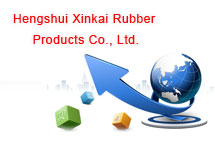

What is a geomembrane?
HDPE geomembrane is a kind of waterproof and barrier type material produced by (medium) high density polyethylene resin as raw material. (geomembrane with a density of 0.94g/cm3 or more). The full name of HDPE geomembrane is "high-density polyethylene film", which has excellent environmental stress crack resistance, low temperature resistance, anti-aging, corrosion resistance, and a relatively large operating temperature range (-60--+60) and Long service life (50 years).

In which projects can geomembrane be used?
1. HDPE geomembrane is suitable for environmental protection and sanitation: such as landfills, sewage treatment plants, power plant conditioning pools, industrial, hospital solid waste, etc.;
2. LDPE anti-seepage membrane is suitable for water conservancy projects: such as anti-seepage, plugging, reinforcement of rivers, lakes, reservoirs and dams, anti-seepage of canals, vertical core walls, slope protection, etc.;
3. HDPE anti-seepage membrane is used in municipal engineering: subway, building underground engineering, planting roof, roof garden, sewage pipe anti-seepage;
4. Polyethylene anti-seepage membrane is suitable for gardens: artificial lakes, rivers, reservoirs, pond bottoms of golf courses, slope protection, green lawns, etc.;
5. High-density polyethylene geomembrane is suitable for petrochemical: chemical plants, oil refineries, oil storage tank seepage prevention, chemical reaction tank, sedimentation tank lining, secondary lining, etc.;
6. Polyethylene geomembrane is suitable for mining industry: washing tank, heap leaching tank, ash dump, dissolution tank, sedimentation tank, storage yard, bottom lining of tailings, etc.;
7. Low-density polyethylene film is suitable for transportation facilities: foundation reinforcement of highways, anti-seepage of culverts;
8. LDPE anti-seepage film is suitable for agriculture: anti-seepage of reservoirs, drinking water pools, storage ponds, and irrigation systems;
9. HDPE film is suitable for aquaculture industry: intensive, industrialized breeding ponds, fish ponds, lining of shrimp ponds, sea cucumber circle slope protection, etc.;
10. High-density polyethylene impermeable membrane is suitable for salt industry: salt field crystallization pond, brine pond cover, salt film, salt pond plastic film.

How to judge inferior geomembrane?
1. The geomembrane of the original packaging material has a good appearance, and the appearance of the geomembrane of the original packaging material is black, bright, smooth, and has no obvious material points. The appearance of the recycled geomembrane is black, rough, and has obvious material points.
2. The geomembrane of the original package has good tear resistance, and the geomembrane of the original package is not easy to be torn and sticky when torn. The recycled geomembrane is easy to tear.
3. The geomembrane of the original packaging material has high flexibility. The geomembrane of the original packaging material has a firm feel, is flexible in bending, and has no obvious crease after repeated bending. The recycled geomembrane has poor bending elasticity and white creases at the bend, which is easy to break after repeated bending.
4. The raw wrapping geomembrane has good physical properties. The raw wrapping geomembrane can be stretched to several times its own length on the testing equipment without breaking, while the recycled geomembrane is poorly stretched, and the raw wrapping geomembrane is not broken. The rupture strength index of geomembrane is about 27MPa, while the rupture strength of recycled geomembrane is lower than 17MPa.
What are the production processes of geomembrane?
The production process of geomembrane is divided into two kinds of blow molding production process and flat extrusion production process.
These two production methods are completely different production methods. First, for blown film, that is, blown film, the blown film production process is a three-layer co-extrusion blow molding production method with three screws. The material is fed to the blow molding machine in linkage, blown from the film head to form bubbles with a diameter of 3 meters, stretched upward and straight to cool and formed, and then extended downward by curling, the middle blade is flattened, and then the geomembrane is unrolled into a roll.
The flat extrusion production process of calendered geomembrane is relatively simple. The calender is usually a screw. When the screw is delivered to the head, the lip of the extruder is typically six meters. If the product is four meters, the lip of the geomembrane can be used directly, but it cannot exceed six meters. After the material is squeezed through the lip, it slowly moves forward through the rollers after pulling.
When flattening, the gap between the rollers is the size and thickness of the geomembrane. It is a calendering process before being rolled and cooled. The appearance of the products produced by these two geomembrane production processes is not very different.

Due to the different production processes of geomembranes, what are the advantages and disadvantages of each geomembrane produced?
1. Calendering geomembrane production process:
Calendered film, also known as lamination film, is a plastic film produced by hot melt cast extrusion of polyethylene raw materials.
The advantage of the geomembrane of the calendering process is that the surface brightness is high, like a mirror surface, and the price is cheaper than the geomembrane of the blow molding process; disadvantages: uneven thickness; materials with low strength and brittleness.
2. Production process of blown film:
Blow molding, also known as blown film, refers to heating and melting polyethylene plastic particles and stretching them into film by air cooling. Plastic processing technology for blown film.
The advantages of geomembrane products produced by blow molding process are stable quality, uniform thickness, high vertical and horizontal tensile strength, and long service life. The disadvantage is that the price is higher than that of the calendered geomembrane because the special material can be used for blow molding.
What kind of geomembrane is used in the project, the owner can choose according to his actual situation